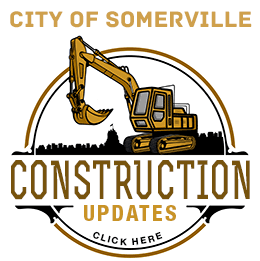 By Joseph A. Curtatone
By Joseph A. Curtatone
(The opinions and views expressed in the commentaries of The Somerville Times belong solely to the authors of those commentaries and do not reflect the views or opinions of The Somerville Times, its staff or publishers)
Whenever we undertake any sort of planning process in Somerville, the specifics of the project may change, but the goal is always the same: building community. What does that mean? It means planning for our community’s future based on our shared values, hopes and dreams. That’s why we undertook an extensive community-based process to create SomerVision, a plan that codifies those values and asks not necessarily what we want to build, but what kind of community we want to be in 2030.
SomerVision gives us the solid foundation for every planning process and every decision we make, but as important as that is, it’s only the foundation. The framework that dictates how and where we build upon that foundation is our zoning code, and like many cities around the nation and world, our zoning code is outdated. We have not undertaken a major review of our current code since 1990, and even after that review, it still contains provisions and mapping decisions adopted almost a century ago.
So after more than a year of work by City planners, we’ve submitted a modernized zoning code to the Board of Aldermen and Planning Board for their review and approval. This overhaul will make zoning more customer-friendly by making it easier to undertake common home improvements like front porches and bay windows, and by making the code easier to read and use. Zoning ordinances can read like another language to the uninitiated. With graphics that illustrate how the code is applied, terminology that replaces planning jargon when possible with more straightforward language, and a simplified list of permitted uses, residents won’t feel lost in the code before they even apply for a permit.
The new code will also make the SomerVision Map a reality. That map partitions the city into residential neighborhoods to conserve; vibrant squares and commercial corridors to enhance; and areas to transform on the city’s eastern and southern edges. It’s an illustration of our vision, but it needs a mechanism to make it a reality. The new zoning code, which enacts more than 100 policies and goals, is that mechanism.
There’s a balancing act here. Among other goals, SomerVision calls for the creation of 6,000 new homes, 30,000 new jobs, and 125 new acres of public open space—most of it in transformative areas like InnerBelt, Assembly and Brickbottom. At the same time, the top values that emerged as resident priorities during the SomerVision workshops were “diversity,” “green space,” “affordability,” and “community.” So as we pursue our goals, we must adhere to these values that define our community.
We know that we face a regional housing crisis and that the 101 cities and towns in Greater Boston need to build 435,000 new homes in the next 25 years. Somerville cannot ignore this. To maintain affordability, we must do our part to build our share of new homes (up to 9,000 homes) to help drive up supply and thus drive down costs. Building addresses the math of supply and demand. But at the same time, we cannot build more housing without also expanding our commercial tax base to help generate new commercial tax revenue. Today, our residential owners shoulder far more of the tax burden than businesses because we simply have far more homes than businesses. Drawing new businesses to Somerville will not only bring jobs, but tax revenue that can bring tax relief to homeowners, thus helping to support affordability as well.
Our proposed zoning overhaul provides the framework to make these goals attainable. While it will make Somerville a national leader in using inclusionary zoning to create more affordable housing, it also sets requirements to ensure that we also see the new commercial development we sorely need. It protects our residential neighborhoods by setting standards so that if there is new development, it fits in with the existing neighborhood, while pushing development intensity toward SomerVision’s transformative areas such as Union Square. It implements incentives for small local businesses while creating a check on chains and big-box stores.
If this all sounds like the solutions the community has been asking for, that’s because the community has already helped shaped the new code. Last summer, every Thursday our planners held workshops to hear your ideas and answer your questions as they built the new ordinance from the ground up. Now that we have our draft, we’re going to continue that community-based discussion. I hope you’ll take part.
This week we’ve launched a new section of the City website at www.somervillema.gov/zoning where you can review the code and submit your feedback. An informational session will be held on Tuesday, Jan. 20 with a presentation on the new code and the opportunity to discuss the proposed ordinance with City staff. And then, on Feb. 10, the Aldermen’s Land Use Committee and Planning Board will hold a joint public hearing on the proposed ordinance.
Your feedback is critical to shaping the zoning code that will set the framework for how Somerville grows in the years to come. I encourage you to visit the website, attend these meetings, and once again show how Somerville can come to together to set a clear path for our community’s future.
















Reader Comments